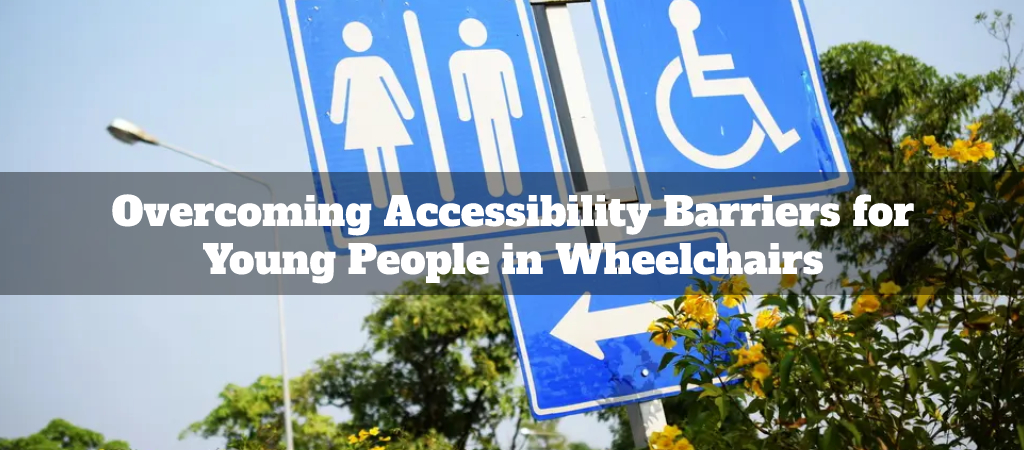Accessibility barriers for young people in wheelchairs make it hard for them to fully participate in activities and go to places that are easy for people without disabilities.
These barriers can be physical, social, or centered on attitudes, and they can severely limit the opportunities and experiences of young people with disabilities.
That is especially true for young people who use wheelchairs and other mobility devices and encounter many accessibility difficulties in the built environment.
Such barriers always affect their independence, mental health, and quality of life as a whole, and young people often can’t go to school, get a job, or hang out with their friends, making them socially isolated.
Our article will discuss some of the most common things that make it hard for young wheelchair users to move around and ways to reduce and manage these issues.
Unfortunately, not all public transportation options are accessible to people who use wheelchairs.
Some of the challenges they might run into are:
The lack of accessible vehicles
Many types of public transportation, including buses and trains, are not designed with handicap accessibility in mind, making getting into and out of the vehicle difficult or even impossible for wheelchair users.
Inadequate vehicle features
Even when accessible vehicles are available, wheelchair users may have trouble getting on because the doors, aisles, or space for moving the wheelchair is too small, or there isn’t enough space. Insufficiently qualified staff or the absence of ramps or lifts can also make it difficult.
Negative attitudes or discrimination
People who use wheelchairs may face negativity or bias from drivers or passengers, including being refused service or handled poorly. It can make life more difficult for people who use wheelchairs by adding difficulties to their ability to get around.
Lack of information and communication
People who use wheelchairs may find it hard to get information from transportation companies about things like schedules and delays. They may not know when or how they will be able to get to their location, which can cause them anxiety and doubt.
Gretchen Onelim, a wheelchair user, shared her difficulties: “Most buses don’t have ramps, so I can’t board them without help.” “Even the sidewalks are not wheelchair-friendly because sometimes there will be high edges that my wheelchair can’t cover.” “Many railway stations don’t have lifts, so moving from one platform to another is practically impossible for me without help.”
Ways to Overcome Transportation Issues
To solve transportation problems for wheelchair users, city planners, architects, business owners, community leaders, educators, and the general public must work together.
Here are some methods in which each of these parties can assist:
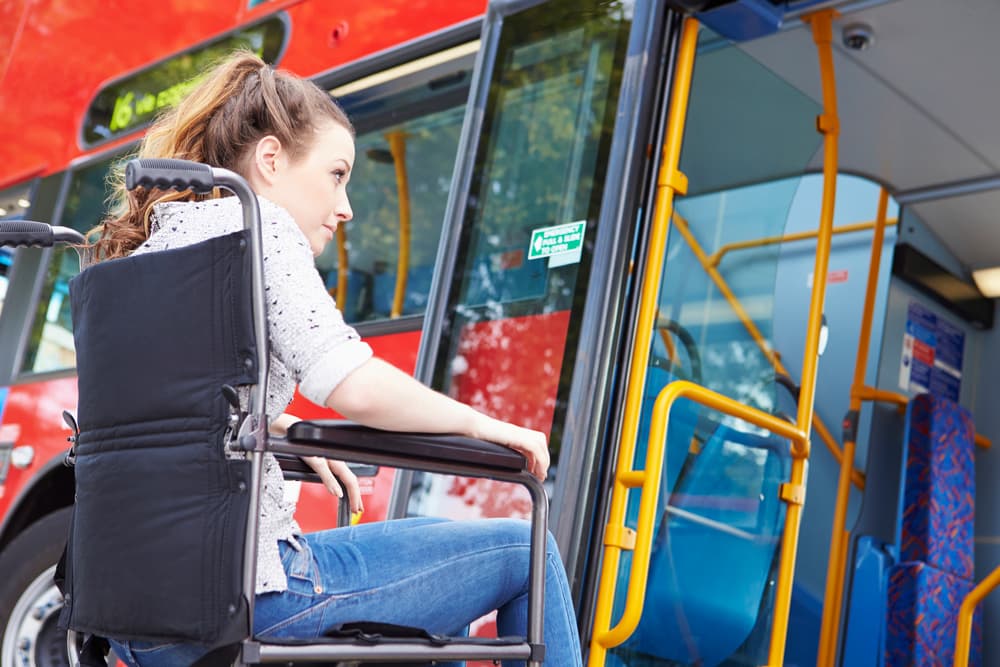
Investing in accessible transportation infrastructure
It includes installing ramps, elevators, and other devices that help people in wheelchairs get into public vehicles, stations, and stops.
For example, in this video, a girl is being assisted with ramps to get on a bus.
New York City’s subway system, AutoGate, features an automated entry/exit barrier.
Providing transportation options that are easy to use
Facilities can be provided by making public transportation like buses, trains, and subways easy to use in a wheelchair. Wheelchair users may also utilize ride-sharing services that provide wheelchair-accessible vehicles, such as Uber WAV and Lyft Access.
Tompkins Consolidated Area Transit (TCAT) is a service that is currently working in this regard to provide services to wheelchair users.
Providing adequate information and communication
By promptly conveying information to wheelchair users about accessible routes, timetables, and delays, transportation companies can improve communication and data sharing. It can be accomplished in several ways, including through online platforms, smartphone applications, and in-person help desks.
Evelity is an app that is fully accessible to people with various impairments. The Jay Street-MetroTech station on the New York City Subway is the first to use the software. Evelity software can customize each user’s profile and abilities. People with limited mobility can use the application to plan the most efficient routes, including stops at lifts and escalators.
Even Google Maps has added features for accessibility, and here is a tutorial for it.
From the YouTube channel Wheels2Walking, Richard showed a tutorial on using public transport for traveling.
Architectural Barriers
Imagine being in a wheelchair in front of a 15-inch step, adding 30 minutes to your trip because the elevator broke, and going through the small safety gates with a massive, heavy bag.
Andrew, a student with a physical disability, was in that situation.
Despite the importance of accessibility in today’s world, many public places and structures are not created with those with physical impairments in mind.
Many buildings lack wheelchair accessibility features like stairs, lifts, and wide doorways. Wheelchair users may find entering, moving around, and utilizing services within the building complex impossible.
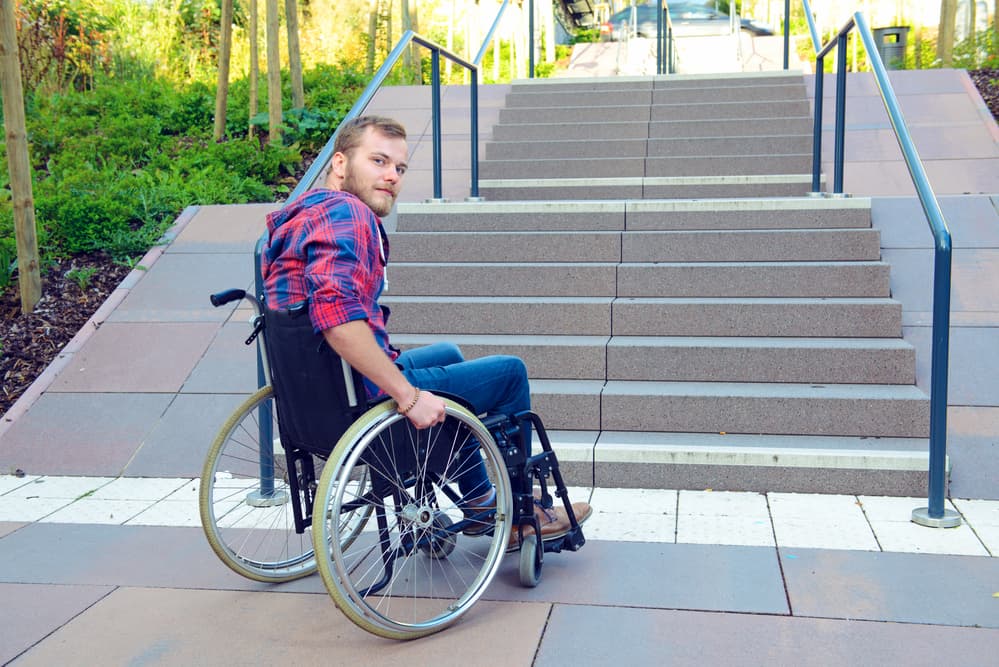
Ways to Overcome Structural Barriers
There are various ways to deal with this challenge.
Improve accessibility in public spaces
To make buildings and spaces more accessible to people with disabilities, they may need ramps, unique parking spots, and automatic doors.
The video above shows an innovative way of making buildings easier to enter and exit.
Promoting universal design
To make public places more accessible for people using wheelchairs, it is essential to advocate for universal design. Wheelchair lifts and elevators can make it easier for people who use wheelchairs to get to the upper floors of buildings and other high places.
The video shows a proper ADA standard design for streets and buildings.
Improved signage
Clear and easy-to-read signs help people in wheelchairs get around public spaces and find entrances and facilities that are accessible to them.
Modify parking lots
Adding accessible parking spaces near the entrance and sufficient space for wheelchair users to get into and out of their vehicles can be used to modify parking lots.
Handicap Parking Lot Striping Services Los Angeles (CA) is an example of providing accessibility to wheelchair users.
Inaccessible Restroom Facilities
Inaccessible restrooms can present a significant obstacle for wheelchair users.
Janette shares that she uses an electric wheelchair for mobility and often finds it challenging to access accessible toilets. The flush button on top of the cistern is inaccessible, the hand dryers are attached at a height I cannot reach, and the lifts in most buildings will only fit a manual wheelchair.
Also, some common problems can make it hard for wheelchair users.
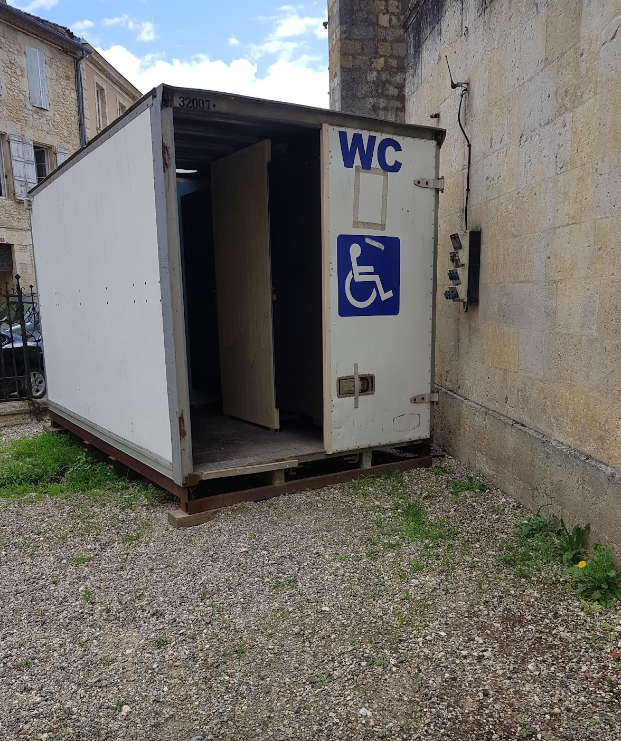
Lack of space and entrance
If a restroom entrance has steps or a narrow doorway, and even if the area inside the restrooms is small, it becomes more challenging to transfer to the toilet seat or maneuver their chair inside the space.
Lack of grab bars
Without grab bars and other supporting materials, wheelchair users cannot safely transfer to or from the toilet or move through the restroom.
Inadequate sink height
With a regular restroom design, it can be challenging for wheelchair users to clean their hands in sinks that are too elevated or too low.
Recommendations to improve restroom facilities
Making facilities more accessible for people who use wheelchairs requires both physical changes and careful planning, along with thoughtful design.
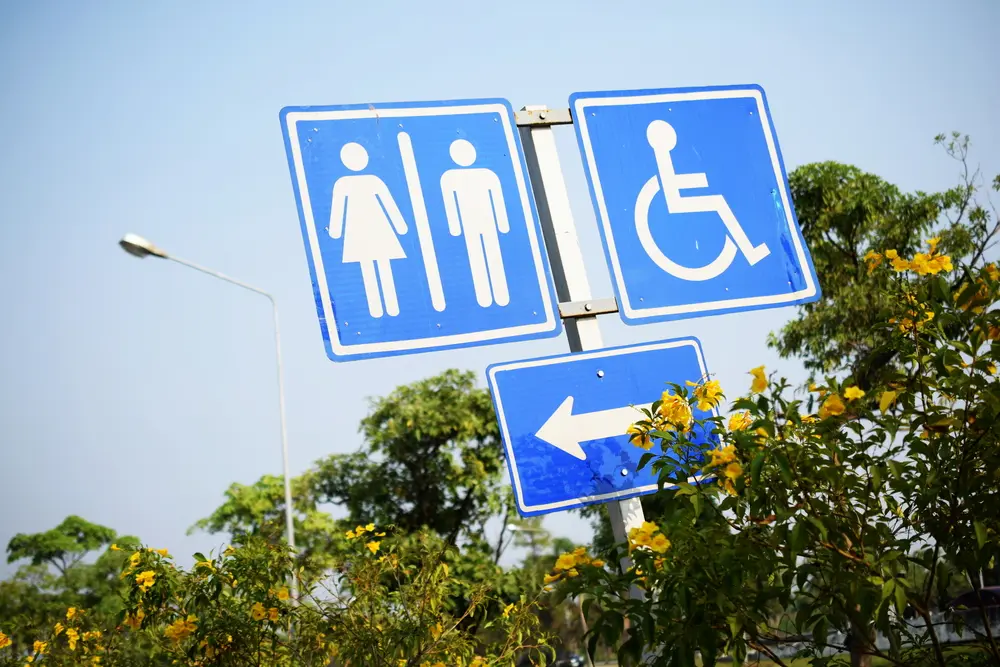
Here are some ways to improve bathroom accessibility:
Install automatic door openers
Automatic door openers can make it simpler for individuals in wheelchairs to get into and exit restrooms.
This video showcases the ease of an automatic door for public restrooms.
Install grab bars and reduce sink height
Installing grab bars in the right places can facilitate the safe transfer of wheelchair users to and from the restroom. Similarly, lowering the sink’s height for wheelchair compatibility provides ease for wheelchair users.
This video shows the modifications needed to make restrooms more accessible.
Create unisex or family restrooms
Wheelchair users who require additional assistance or privacy can benefit from the availability of separate unisex or family restrooms.
Read our post for additional details on the most suitable design for accessible bathrooms.
Inadequate Wheelchair Ramps
Inadequate wheelchair ramps make entering buildings challenging for people with mobility impairments.
For instance, steps and other barriers can restrict the mobility of wheelchair users, preventing them from engaging in outdoor activities or traveling the city. When these places don’t have wheelchair ramps, it can make people feel left out and alone.
Even if the ramps are too high, too steep, or too narrow, they pose safety risks for wheelchair users. Wheelchair users may find it difficult or hazardous to traverse a ramp that is too steep or has an uneven surface, resulting in accidents, injuries, or even more severe outcomes.
Handrails are essential for people in wheelchairs to use ramps safely and securely. Wheelchair users may find it challenging to use the ramps securely if handrails are absent or placed incorrectly.
The same goes for uneven and bumpy surfaces, which make movement in a wheelchair very difficult.
A video showcasing how difficult it can be to move on a bumpy and uneven surface
Solutions and Recommendations
Here are some ideas for improving the usability of mobility ramps,
Ensure proper slope
Ramps should be built to ADA specifications for elevation and rise to ensure the safety and convenience of wheelchair users. The ADA recommends a maximum height of 30 inches (760 mm) and a maximum horizontal run of 30 feet (9 m), with 36 inches of width between handrails.
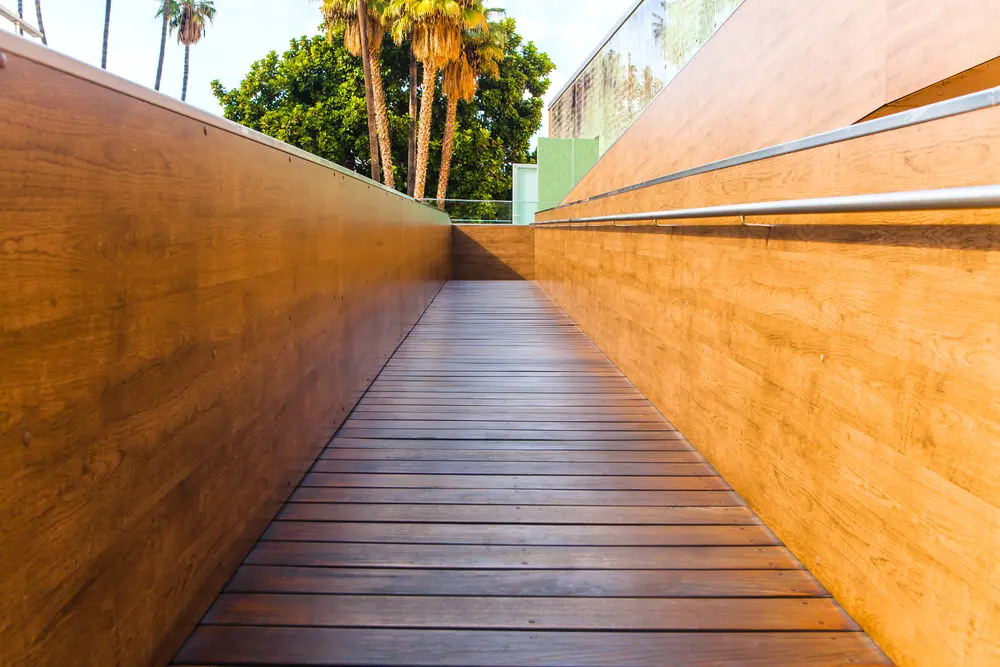
Install a smooth and even surface
The primary purpose of a wheelchair ramp is to navigate ramps safely, so they should have a smooth and uniform surface.
Provide handrails
Handrails should be present and properly installed to provide wheelchair users with balance and stability while using ramps. The recommended height of the bars should not be 37 inches (94 cm) nor fall below 30 inches (76 cm).
The video above talks about the most important things to think about when designing and building a sloped ramp that meets the requirements of the Americans with Disabilities Act.
The Role of Community, Business, and Government in Improving Accessibility
Community members, businesses, and government entities must collaborate to improve accessibility.
Here are some ways in which each of the above groups can contribute to accessibility:
Research has shown that community engagement is critical to improving accessibility for individuals who use wheelchairs. Community members can advocate for change and raise awareness about accessibility issues. They can participate in local government meetings and collaborate with advocacy organizations to promote the construction of more accessible public spaces.
Community members can also help and support people with disabilities, which can help break down barriers and make the community more open to everyone.
Businesses can make their things more accessible by installing wheelchair ramps, accessible parking, and accessible facilities, among other measures. Additionally, they can train their employees to interact with people with disabilities and ensure their products and services are accessible to everyone.
Government entities play an essential part in ensuring universal accessibility. They can implement laws and regulations mandating accessibility standards in public spaces and ensure compliance by enforcing them.
In addition, they can provide funds and resources to support the creation of accessible infrastructure and services.
Numerous governments and organizations developed accessibility standards to design publicly accessible buildings and facilities. These guidelines aim to make public spaces welcoming and accessible for people of all abilities.
Conclusion
Our duty as a community is to guarantee that physically disabled young people have equal chances to engage in society and live fulfilling lives. It all involves identifying and removing obstacles to schooling, employment, healthcare, and other essential services.
We must use the above solutions to ensure that people of all abilities have the same chances to help society and reach their full potential. It is suitable for the community because it encourages creativity and the acceptance of those with different talents.
People with disabilities, their families, disability rights activists, policymakers, and the rest of society must realize that this process requires their continued efforts and cooperation. We can create a more just and fair society if we all pitch in.
